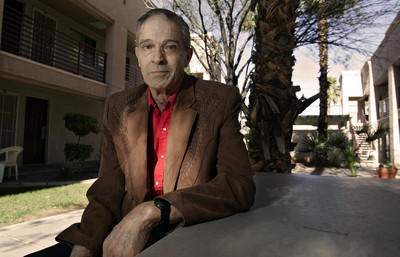Test site claim heard
After seven years of wrangling and denials by federal agencies, former Nevada Test Site worker John Funk has Labor Department officials backpedaling to resolve his compensation claim for exposure to toxic substances from at least one nuclear weapons test 28 years ago.
In a letter Funk received last week from a hearing representative in the department's Final Adjudication Branch, he learned that his case had been mishandled and he might have been exposed to a few toxic compounds, not the least of which was lithium hydride powder from the 1980 Huron King nuclear detonation.
"Records also indicate you worked in several areas at the NTS in which the toxic substance benzene may have been used; and an incident report indicates you had an acute exposure to lithium hydride," reads the Feb. 27 remand order Funk received from hearing representative Sandie Howley.
The order says Funk, a Las Vegas carpenter who is chairman of the nonprofit advocacy group Atomic Veterans and Victims of America, was not given a chance to complete an occupational history questionnaire or participate in an interview about his work history at the test site, 65 miles northwest of Las Vegas.
"Accordingly, your claim for skin cancer, myeloprolifterative disorder and colon cancer is remanded to the Seattle district office," the order reads.
Funk believes his skin cancer is linked to exposure to a compound of lithium, which is a soft, silver-white colored alkali metal.
He blames his continuing bout with myeloprolifterative disorder, which is a form of bone marrow cancer that affects blood cell production, on exposure to benzene or radioactive materials or both.
He said his colon cancer was probably caused by toxic chemicals used to make fire-retardant wood and preventing rot in wood used at the test site.
In an interview, Funk said he tried to explain his work history three times to case workers for the Energy Employees Occupational Illness Compensation Program. Under the program, claimants who show that their illnesses were likely caused by their exposures at test site to radioactive or toxic materials or both can receive at least $150,000 in compensation plus reimbursement for medical expenses.
"They screwed up," Funk said. "They did not take down written interviews of anybody ... and the information we did send in got put in the trash.
"My case is not the only one. There's going to be a lot of them," he said.
The Labor Department's Office of Workers Compensation Programs in Washington, D.C., said officials will try to find out how many other cases like Funk's might be out there.
"Once we find out what the impact is in a given case, we then determine whether NIOSH (the National Institute of Occupational Safety and Health) did or didn't include this new information from the incident in other similar cases," a representative for the office wrote Thursday in response to questions.
The Labor Department will also determine whether any other cases didn't include occupational history questionnaires or occupational history interviews.
Regarding the incident described by Funk, the Labor Department is "remanding the case to be sent back to NIOSH to factor in the incident in a new dose reconstruction," the workers compensation office said.
The Huron King nuclear test was conducted June 24, 1980, in a shaft at the Nevada Test Site for the Pentagon's Defense Nuclear Agency. It was designed to simulate a cold, outer space environment to gauge the effects of a nuclear bomb exploding near a communications satellite.
The device was detonated at the bottom of the shaft and the so-called "nuclear effects" were reflected off 9-inch-thick, lithium hydride plates at the surface toward a large tank containing a communications satellite and other targets.
The test was designed to shock the satellite with electromagnetic pulse, heat and radiation. The plates were reduced to a fine-powder smoke.
Archive documents show that airborne lithium hydride particles were detected inside the tank six days after detonation and an effort was made to remove them with a vacuum.
Funk said carpenters made a floor for the tank and installed it so that technicians who were sent to retrieve the satellite and other targets in the curved chamber would have a flat place to walk. When he entered the tank he wore a dust mask but he said it was ineffective for filtering the extremely fine particles.
Funk later went to a health clinic at the test site for treatment of flulike symptoms.
"My throat was real harsh. I couldn't taste anything. I had headaches and fever," he said.
In all, counting recovery teams that retrieved cameras from Huron King's crater to industrial hygienists who checked air inside the tank, government and contractor personnel made 515 entries into the area. Pocket dosimeters indicated possible radiation exposure although film badges of recovery team members detected no evidence of exposure to gamma rays.
Contact reporter Keith Rogers at krogers@reviewjournal.com or (702) 383-0308.

















